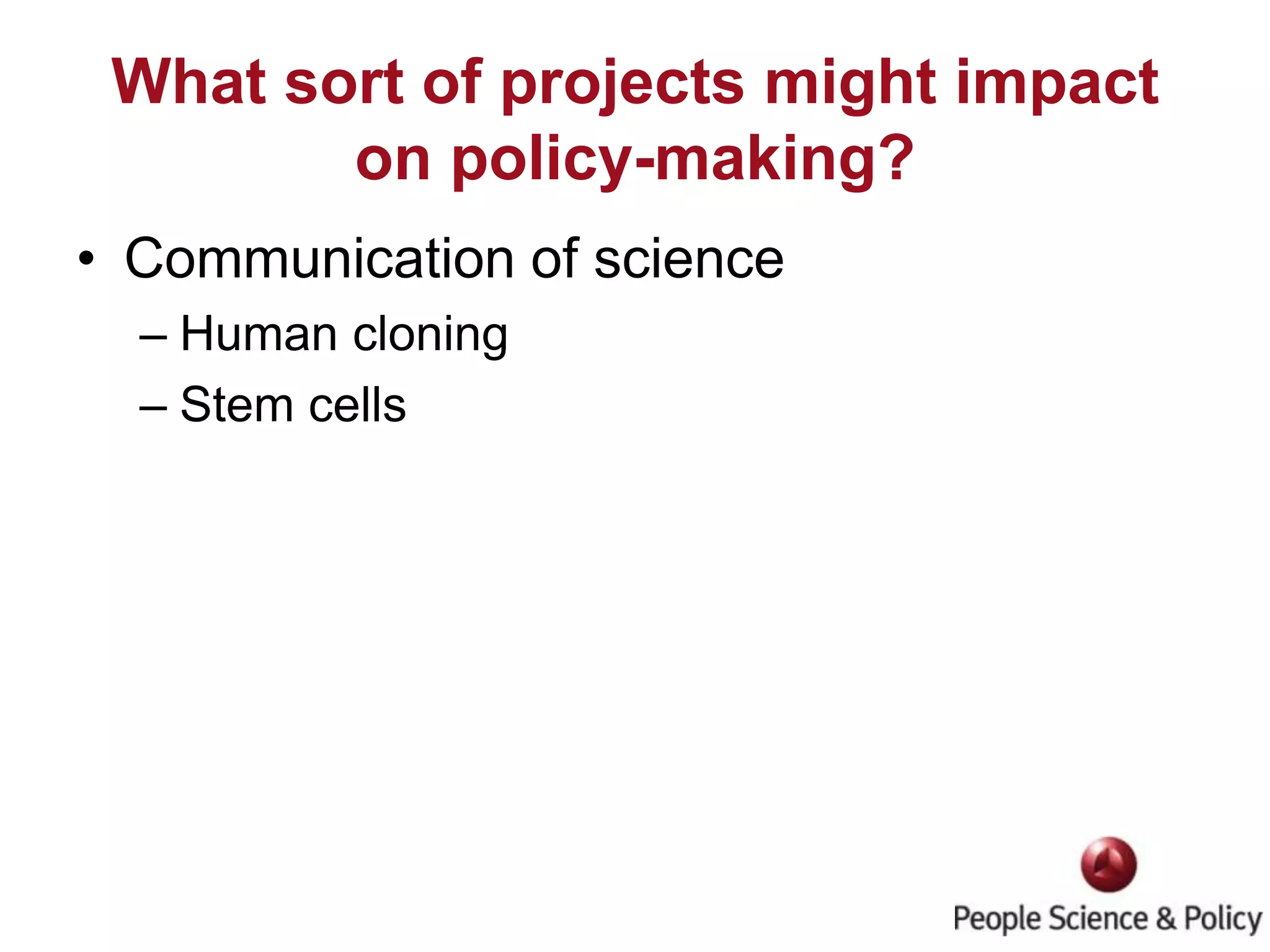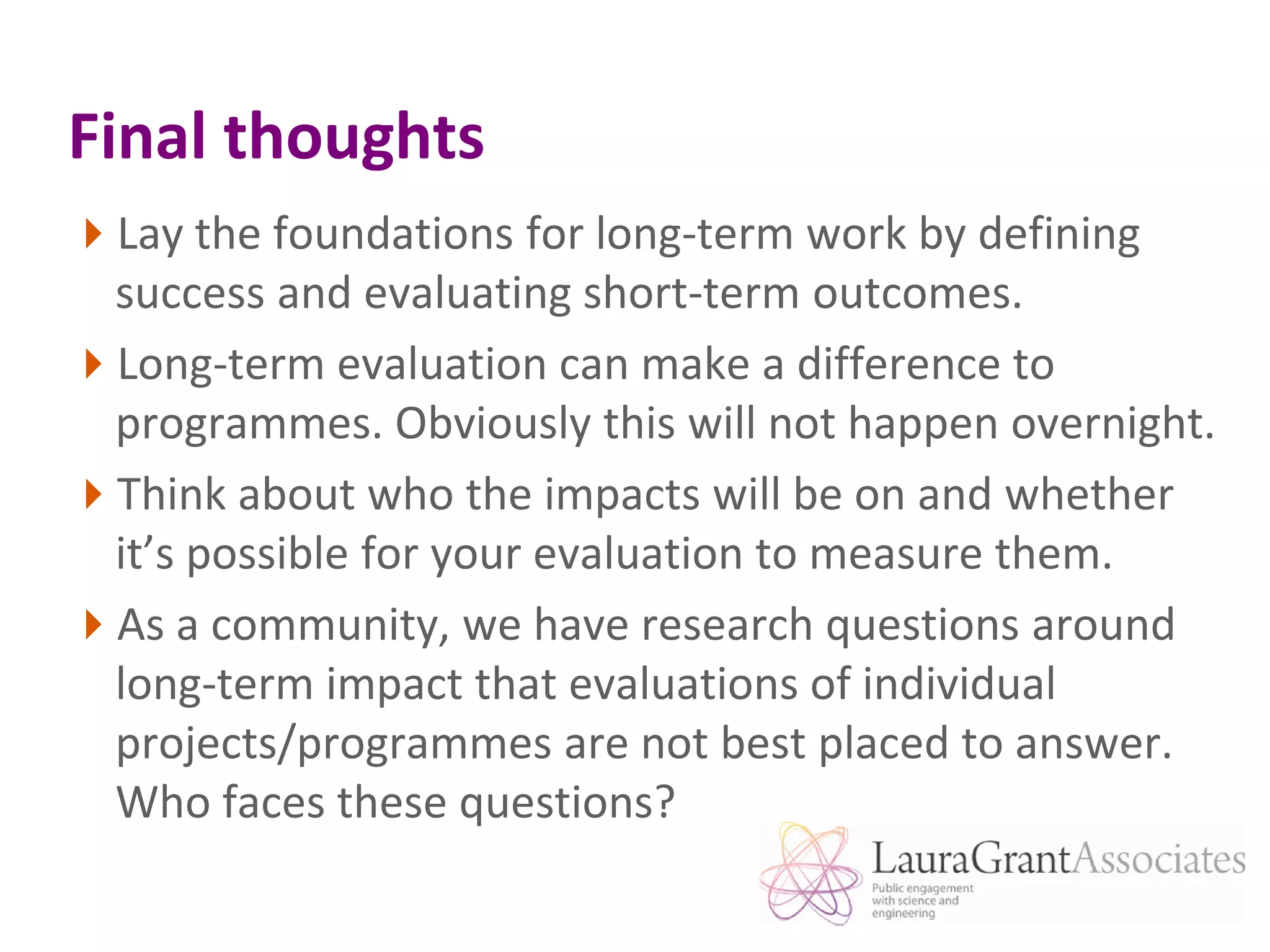The document discusses the evaluation of science communication projects and their impacts on policy-making, emphasizing the importance of measuring both immediate and long-term effects on policy-makers and public participants. It outlines challenges in tracking long-term impacts and suggests methods for assessing value for money in public engagement projects by focusing on specific types of impacts. Additionally, the document raises questions for discussion on how to address these evaluation challenges in future projects.




































